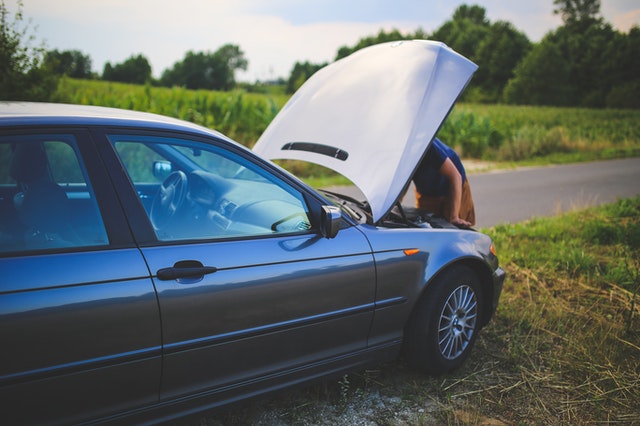Car insurance claim tips
Matilda Douglas-Henry
Making an insurance claim can be a stressful and overwhelming process, particularly in the immediate aftermath of an accident. This article will cover all the most useful car insurance claim tips, including:
- An overview of car insurance claim tips
- How car insurance claims work
- How to file a car insurance claim
- What to do in the aftermath of an accident
- Steps to follow when you’re not at fault
- Situations where you’re not covered by your insurance
- Claims for environmental damage

Car insurance claims: an overview
To successfully file an insurance claim, you must follow these three steps: pay attention to every detail, be aware of the particulars of your insurance plan, and be honest. It’s very natural to be rattled or overwhelmed in the event of an accident, regardless of its severity, so ensure that you have your phone and are able to take notes and photos of the scene. An attention to detail is essential: you need to tell your insurance provider everything as objectively as possible, and be able to provide evidence.
This brings us to honesty. It’s important to be as truthful and impartial as you can when making your claim, because insurers need to be able to meaningfully assess the incident to understand who was at fault. The main reason most insurance claims are denied is because of misinformation provided. Sometimes this happens in earnest: many drivers are not as familiar with their insurance policies as they think, and will file claims thinking they are entitled to certain benefits. We can’t stress this enough: review your policy, clause by clause. It may seem tiresome in the moment, but it will only serve you well long term.
How does car insurance work?
In the event of an accident, insurers will want to recover costs from the responsible party’s insurance policy. This includes damages, rental car hire, and other expenses. Additionally, the party who was not at fault will receive all the benefits their own policy outlines, like free towing and repairs, and emergency replacements like glass. If both parties are responsible, they will both cover the costs of repairs.
Before you begin your claim, you will need to pay the excess: the predetermined sum that you pay your provider in the event of an accident. If it was a clear no-fault accident, you will not have to pay any excess.
How do I file a car insurance claim?
There are many different ways to file an insurance claim. Each insurer is different, but most of them will have the same options, which include:
- Online, via a claim form on their website;
- On the phone (although you will need to provide certain supporting materials, like photos, using another method);
- On your provider’s app, if they have one;
- By mail or in person, although this is becoming increasingly less common.
What to do in the aftermath of an accident
- Exchange details with the other driver: Name, registration, contact number, address, licence number, CTP insurance and policy, and a brief statement are all necessary. If there were any witnesses, exchange details with them too.
- Take notes: Document what happened from your perspective, taking into consideration weather conditions, traffic signs, etc. Take photos/videos of the damage.
- Report the incident: It’s almost always a good idea to report an accident to the police, but above all notify your insurer. Do this ASAP to avoid any delays in your claim being processed.
- Get insurer approval before seeking out repairs: Many insurers have suppliers that they mandate you work with for any repairs. This will likely speed up your claim’s processing time too. If you’d prefer to work with your local panel beaters then you will either need to have 'choice of repairer' on your policy or make sure you get your insurer’s approval on quoted costs, and keep receipts of all payments for reimbursement*.
What do I do if I’ve been in an accident and I’m not at fault?
In this case, the same rules apply as above: be diligent, straightforward, and thorough in recording all details of the incident. Send a letter to the other driver and state your intention to make a claim against them. The 'at fault' party will then pass your letter onto their insurance provider. When you are not at fault you can go to your local panel beater and get a quote, you don't have to use any insurer mandated one. Even easier you can just submit your repair request to DingGo and we will link you up with the best local panel beater in your area and happily talk you through the process for making your claim against the 'at fault' party with your insurer. While looking for repair quotes, get at least two to demonstrate that they are reasonably priced, and be sure to include all additional costs if applicable (i.e. towing) before sending copies*. DingGo will help you easily get up to 3 quotes if you need.
When am I not covered by my insurance?
No matter your policy, there are some instances where you will not be covered by insurance in the event of an accident. These are:
- If you are found guilty of negligent driving (i.e. speeding or breaking any other laws);
- If you have been drinking and are above the legal limit;
- If you are using illicit substances that affect your ability to drive responsibly*.
Car insurance claims in the event of weather damage
Australia has extreme and unpredictable weather all year, particularly in regional areas, and certain damages—particularly hail damage—make up millions of dollars of claims on an annual basis. To ensure that you are entitled to claim weather damage, you must have comprehensive car insurance. Comprehensive policies usually have a broad “accidental damage” clause which includes hailstorms, fires and floods, but every insurer is different, so familiarise yourself with your provider.
Compulsory third party (CTP) insurance is mandatory in Australia, whereas comprehensive is optional. If you live in an area where volatile weather is common, comprehensive insurance is a must-have addition*. Even if you have the right insurance, be mindful that weather damage claims can take a long time to process as providers are often overwhelmed with claims in the area.
Conclusion
If you need to make a car insurance claim, the biggest favour you can do for yourself is be proactive: don’t put it off! Follow the steps, be thorough and efficient, and don’t panic. Ask your provider any questions you might have: remember they are there to help you. And for those repair quotes, don’t forget to use DingGo’s quick quotes service.
